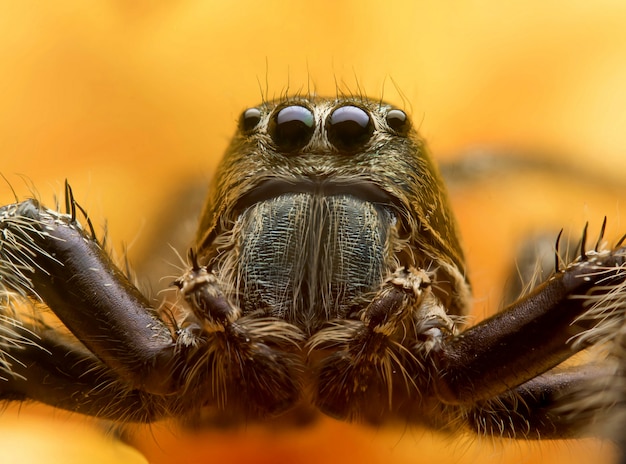Interesting Facts About Spiders

Spiders are fascinating creatures with intricate webs.
Did you know that spiders have eight legs, while insects have only six?
Spiders are not insects, but belong to the arachnid family.
Some people have a fear of spiders known as arachnophobia.
Spider silk is incredibly strong and is often used as a material in research and technology.
A spider’s web can be as large as 2 meters in diameter.
Spiders molt multiple times throughout their lives as they grow.
The largest spider in the world is the Goliath bird-eater, with a leg span of up to 30 centimeters.
There are around 50,000 known species of spiders worldwide.
A spider’s venom is used to immobilize its prey.
Certain spiders, like the black widow, have venom that is dangerous to humans.
Spiders play an essential role in controlling insect populations.
Wolf spiders don’t spin webs and instead hunt their prey.
Some spiders are capable of walking on water surfaces using tiny hairs on their legs.
Male spiders often perform complex courtship dances to attract females.
Spiders have multiple pairs of eyes, which vary in number depending on the species.
Not all spiders produce silk, and some use it only for egg sacs.
Some spiders, like the peacock spider, have beautiful and colorful patterns on their bodies.
Spiders have specialized mouthparts called chelicerae, which they use to inject venom into their prey.
Interesting Facts About Spiders part 2
Daddy longlegs spiders are not venomous to humans, despite popular belief.
Spiders have been found in nearly every terrestrial habitat, including deserts and rainforests.
Trapdoor spiders create burrows with hinged doors made of silk and debris.
The black widow spider gets its name from the female’s tendency to eat the male after mating.
Some spiders, like the orb-weavers, rebuild their webs every day.
Spiders are capable of regrowing lost legs through a process called autotomy.
Some spiders, like the diving bell spider, can live and hunt underwater.
The smallest spider in the world is the Patu digua, with a body length of only 0.36 mm.
Jumping spiders have incredible vision and can detect movement from a considerable distance.
It is estimated that the total weight of spiders in the world exceeds that of all humans combined.
Some spider species exhibit maternal care by protecting their eggs and young spiders.
Orb-weaver spiders produce silks with different properties for different parts of their webs.
Some spiders display intricate behaviors such as dancing, drumming, or strumming to communicate with mates.
Despite their reputation, most spiders are harmless and beneficial.
The silk from a golden orb-weaver spider is so strong that it can withstand being hit by a bird.
Spiders are found on every continent except Antarctica.
Spiders can be found in various colors, including black, brown, yellow, and even metallic shades.
Some spiders, like the peacock spider, have vibrant courtship displays involving elaborate dance moves.
The average lifespan of a spider can range from a few months to several years.
Spiders have sensory hairs on their legs that help them detect vibrations and movements.
The huntsman spider can have a leg span of up to 12 inches, making it one of the largest spiders in the world.
Some spiders, like the trapdoor spider, create camouflaged burrows to ambush their prey.
The silk produced by spiders has been studied for its potential medical applications, such as wound healing.
Spiders play a crucial role in maintaining the balance of ecosystems as natural pest controllers.
Some spiders, like the orb-weavers, rebuild their webs every night using fresh silk.
Despite their sometimes creepy appearance, spiders are incredible creatures that deserve our respect and appreciation.

